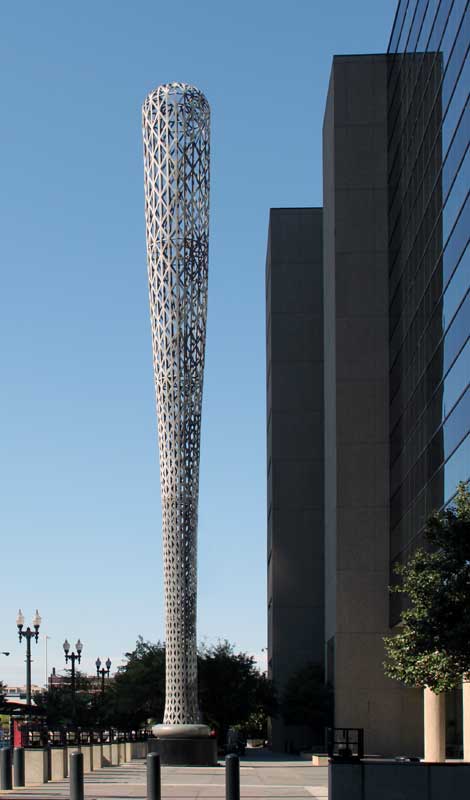A Spanish startup has developed a wind turbine that uses the pressure differential caused by vortices passing a single mast to generate power, replacing the blades on a conventional wind turbine. They say the benefits are:
Lower noise
No dead birds
53% reduction in manufacturing costs (compared to large conventional wind turbines)
80% reduction in maintenance costs (no rigid parts rub against each other, no periodic lubrication, etc)
More at this link: Forbes article
They are planing to build big ones, but also 100W units for remote villages in the 3rd world and a 40' tall, 220 lb unit with a capacity of 4KW for use by off-grid homes (together with solar).
Compared to regular wind turbines, this design collects 30% less energy for the same swept area, but the devices will be cheap enough to build, install, and operate that they say it will reduce the cost of wind power by over 50%. Time will tell.
Investment opportunities will reportedly be available, obviously any money plunked down on this would be highly speculative. But the tech is interesting.
Unfortunately (to my eye), a field of them would be just about as ugly as regular wind turbines. Still, if I had an off-grid house, I'd much prefer a few of these at the edge of my property than a spinning wind turbine. The company's web site is obnoxious, but contains this bit about how it works. It just oscillates a bit in the breeze, that produces the power.
Video of Bladeless Wind Turbine

Lower noise
No dead birds
53% reduction in manufacturing costs (compared to large conventional wind turbines)
80% reduction in maintenance costs (no rigid parts rub against each other, no periodic lubrication, etc)
More at this link: Forbes article
They are planing to build big ones, but also 100W units for remote villages in the 3rd world and a 40' tall, 220 lb unit with a capacity of 4KW for use by off-grid homes (together with solar).
Compared to regular wind turbines, this design collects 30% less energy for the same swept area, but the devices will be cheap enough to build, install, and operate that they say it will reduce the cost of wind power by over 50%. Time will tell.
Investment opportunities will reportedly be available, obviously any money plunked down on this would be highly speculative. But the tech is interesting.
Unfortunately (to my eye), a field of them would be just about as ugly as regular wind turbines. Still, if I had an off-grid house, I'd much prefer a few of these at the edge of my property than a spinning wind turbine. The company's web site is obnoxious, but contains this bit about how it works. It just oscillates a bit in the breeze, that produces the power.
Video of Bladeless Wind Turbine

Last edited:




